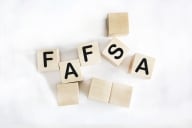You have /5 articles left.
Sign up for a free account or log in.
More than a few people probably chuckled a little, back in January, when the University of Maryland at College Park came under fire for a press release about research that linked drinking a brand of chocolate milk to recovery from concussions. Many said at the time that the press release seemed like unpaid advertising, given that the findings were never subject to peer review.
But since then, a barrage of questions about research ethics and conflicts of interest has led the university to take down the press release, halt (for good) the research it described and form a committee to investigate the entire affair. The final report from that investigation, released Friday, found the university to be lacking important policies and procedural guidelines for publicity and product endorsement and that multiple people involved in the chocolate milk research did not understand what constitutes a conflict of interest.
During a conference call Friday, university officials said they are in the process of planning and adopting policy changes and plan to return $228,910 that private entities with ties to the chocolate milk product contributed to the university for chocolate milk research. Though investigators found no wrongdoing on the contributors’ part, the money is being returned “out of an abundance of caution and to remove any perception of conflict of interest.” Officials declined to comment on whether disciplinary action would be taken against the lead researcher or anyone other university employee.
At issue are two studies conducted by Jae Kun Shim, an associate professor of kinesiology in the School of Public Health, on Fifth Quarter Fresh, a brand of chocolate milk produced by the company Fluid Motion LLC. Shim received funding for his research from the Maryland Industrial Partnerships Program, which promotes public/private partnerships with businesses. Fluid Motion contributed $20,000 to two MIPS grants totaling $200,000 for research by Shim measuring how Fifth Quarter Fresh affects muscle fatigue in college and high school athletes. Fluid Motion also provided roughly $8,000 worth of its chocolate milk to the university athletics department for the athletes who participated in the study.
Shim endorsed the chocolate milk in two MIPS press releases that both cited preliminary findings from research that had been neither published nor peer reviewed. It was the second of those, which mentioned that outcomes improved in concussed (and nonconcussed) athletes, that sparked the critical firestorm. The press release surfaced at a time of intense scrutiny of football-related concussions and great public interest in treating concussions.
The university does restrict the use of its name by private entities, and faculty members may “not convey endorsement by the institution or the university system of the recommendations of results from his or her consulting or professional services,” says the to USM Policy on Professional Commitment of Faculty. But the report found it to be “unclear” whether or not those rules applied to a university-sponsored project. It did note, though, that “it is surprising that a tenured faculty member would think that product endorsement is appropriate.”
The report also called “concerning” a “lack of understanding of the basic principles of conflict of interest (COI) in research at all levels of the process.” In addition to the money and chocolate milk provided by Fluid Motion, a co-op of milk companies called Allied Milk Producers, of which Fluid Motion is a member, donated a further $200,000 to the university foundation to be used in support of Shim’s research. Shim told the committee behind the report that he did not report the donation as a conflict of interest because it had been given to the university’s foundation rather than to him directly.
Among the many reforms recommended by the report -- all of which the university said it is in the process of adopting -- is mandatory, in-person conflict of interest training for all faculty, staff and graduate students working on funded research or service projects. Currently, there is such training for graduate students, but it is not mandatory for all faculty and staff.
The report includes numerous other findings and recommendations. Some touch on more major concerns raised by critics, like whether or not high school athletes involved in the second phase of Shim’s research knew they were participating in a study or the fact that outside faculty who reviewed Shim’s research proposal raised concerns that never made their way to Shim. The report does not address other issues that have been raised, though, like the quality and efficacy of the research itself.
Despite the extensive reform recommended by the report for research and publicity procedures, officials Friday said the problems with Shim’s chocolate milk research were an anomaly.
“It’s clear that this did not meet the normal standards that we have,” said Patrick O'Shea, vice president and chief research officer. “It’s important, but it is unusual. We believe this is not a normal occurrence. I believe it’s important to catch these things early so everyone can learn from this.”
Shin did not respond to emailed requests for comment.








